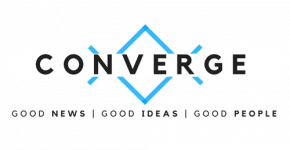In biotechnology today, one of the pressing questions is what improvements should be allowed to either restore a person’s health or enhance it? It is an issue that is bioethical in nature. Would it be considered unethical to enhance the performance of an individual? Would it be unethical to restore a person back to their original status of health? These are very important questions to address, because with the technology that is available to us today we are easily capable of performing genetic enhancements that can cause an individual to be physically and mentally stronger than another person. It is unethical to perform enhancements that alter and drastically change the genetic structure and expression of cells within the body. It is unethical because it is taking something that was created in the image of God and distorting it into something that was never intended. It takes medicine away from using therapies in restoration of a persons health to enhancements that can destroy the image of God.
In 2002, The President’s Council on Bioethics, led by Dr. Leon Kass, discussed the idea of going beyond only using therapy to treat a patient. Dr. Leon Kass said that the following is now able to be done: drugs and gene transfers that are able to enhance athleticism; altering genes that augment muscle strength and vigor; use psychoactive drugs that can alter mood, memory, or behavior; control the sex of a child; increase the human lifespan; and be able to tell genetic susceptibility of diseases in offspring (Kass, 2002). These enhancements are able to alter the genetic structure of each cell within a person’s body. Each is seen as an enhancement instead of a restoration. They are seen as an enhancement because they alter the genetic structure, which alters the development of a person.
An improvement that does not affect the genetic structure was discovered in the late 1990’s by a research team at UC Berkely. This improvement comes from a new are of genomics, and it is called the field of epigenetics, and it means that the DNA strand is coiled around itself in a spool-like fashion. There are thousands of spools for the entire length of the DNA. Located on the spools are histones, and these histones have tails that extend into the grooves of the DNA strand. These histones act as receptors, which means some molecule binds to it and it causes a response, or an action to occur. The response or action is a switching “on” or “off” of a particular genetic expression. Certain natural molecules like a soy peptide called Lunasin, which was discovered by Dr. Alfredo Galvez, has been shown to bind to the histones and cause the positive genetic expressions to turn on or remain on, and the negative expressions to turn off. Other molecules in our environment or that we ingest can bind to the histones and cause negative genetic expressions to occur. So in this sense, Lunasin acts with an epigenetic mechanism of action that is restorative instead of an enhancement. It restores every cell within the body to its optimal health, and it either kills off the diseased cells or prevents their further replication (Galvez, 2015). It has a positive effect in every physiological aspect of the human body. From cholesterol to weightlifting it has been shown to have very positive effects on every cell in the body. It is currently being considered for clinical trials in cancer studies. It is incredible to realize that God has given us the ability to have all that we need in the world, and Lunasin would be a great example of that.
It is important to realize that with the new advancements in biotechnology, there comes a choice that needs to be made. Will we place bioethics aside and just do whatever we decide to do with our technological capabilities? The list of capabilities from Dr. Leon Kass is only the beginning. Eventually we will be able to completely pick and choose what our future children will look like and act like. We will be able to, if not already, use synthesized physiological enhancements that drastically improve our athletic and mental performance. Where do we draw the line? What are the principles and virtues that give us a foundation to make some of the difficult bioethical questions about enhancement? It is necessary to have restoration of health, but where is the line between restoration and enhancement?
Some restoration therapies might be seen as enhancements and vice versa. The principle for answering these questions is that we are individuals created in the image of God, and He has given us exactly what we need in nature to be able to create therapies that can restore each person back to their original design. The problem with this principle is that we do not necessarily know what the original design was. How do we know if we are restoring a person back to their optimal health or not? If an individual has their health restored in mind, body, and spirit they are very near what God’s original design was for us. In body it is important to eat foods that have a positive effect on our epigenetics and also to exercise properly. It is also important to “exercise” our mind and spirit as well by reading, writing, and communicating with God and with others. It is especially important for our spirit to dwell and meditate on the words of scripture. Our optimal health will never be the same because of sin entering our world, but it will be as close as it can be in a sinful world.
-References-
– Kass, Leon. “The President’s Council on Bioethics: Beyond Therapy: Biotechnology and the Pursuit of Human Improvement.” The President’s Council on Bioethics: Beyond Therapy: Biotechnology and the Pursuit of Human Improvement. 1 Jan. 2002. Web. 23 Jan. 2015. <https://bioethicsarchive.georgetown.edu/pcbe/background/kasspaper.html>.
– Galvez, Alfredo. “What Is Lunasin?” Lunasin. Web. 23 Jan. 2015. <http://lunasin.com/>.





